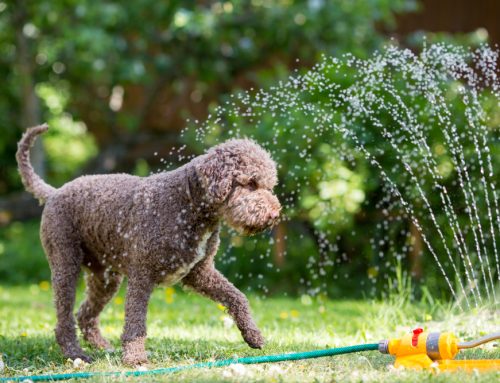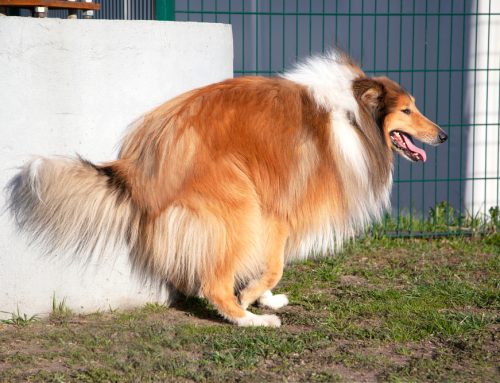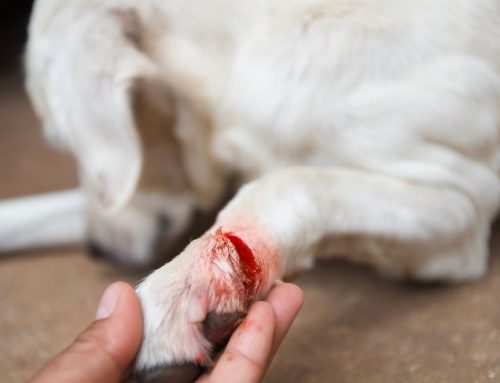Winter has set in, bringing cooler temperatures to our area. And, although Alabama’s winters may not be as harsh as other areas, it’s still important to keep pets safe and comfortable as the temperatures drop. Whether you’ll be sticking around here all winter or you’re planning to take your pup with you for your next Colorado ski trip, here are six cold-weather safety tips every dog owner should know.
1. Understand your dog’s cold tolerance
Different pets have varying levels of tolerance to cold weather. Factors like age, coat type, body fat stores, activity level, and overall health can influence how well your pet can withstand the cold.
Some dog breeds are generally more sensitive to cold temperatures than others because of their coat type or body size. These breeds include:
- Chihuahua
- Greyhound
- Dachshund
- Doberman pinscher
- Boxer
- French bulldog
- Whippet
- Chinese crested
- Miniature pinscher
If your dog has a lower tolerance to cold temperatures, a sweater or winter coat can help to keep them warm during outdoor walks or other activities.
And, while some dogs may have a higher tolerance to cold temperatures—think Siberian husky, Alaskan malamute, Saint Bernard, Newfoundland, Bernese mountain dog, Great Pyrenees, and others—no pet should be left outside for long periods in cold weather.
2. Provide adequate shelter
Keeping your dog inside your home is always the best and safest option. But, if your pup spends a significant amount of time outdoors, ensure they have a warm, dry, and draft-free shelter. The shelter should be large enough for them to move comfortably but small enough to retain their body heat. Bedding, like straw or a thick blanket, can help to keep your dog warm.
3. Protect their paws and skin
Cold weather can dry out your dog’s paws and skin. Help prevent dry skin by bathing your dog less frequently during the winter months. After outdoor walks, wipe down your dog’s legs, paws, and stomach to remove ice, salt, and chemicals. Check for cracks or signs of irritation in your pup’s paw pads, and use a pet-safe moisturizer, like Musher’s Secret, to keep your dog’s paw pads from drying out. If you use ice melts on your property, be sure to use a pet-safe option.
4. Be aware of cold weather hazards
Antifreeze, which can leak from cars, is toxic to pets, even in small quantities. Be vigilant about spills in your driveway or on the street.
5. Never leave pets in cars
We know just how dangerous leaving a pet in a hot car can be, but that danger isn’t limited to summertime and hot weather. A car’s interior temperature can quickly become dangerously cold during the winter, so don’t leave your pet unattended in your car, regardless of the season.
6. Recognize signs of hypothermia in dogs

Hypothermia in dogs occurs when their body temperature falls below the normal range, which is typically around 101 to 102.5 degrees Fahrenheit. This can happen during cold weather, especially if your dog is wet or has been outside for too long.
Some signs of hypothermia in dogs include:
- Shivering
- Weakness and lethargy
- Slow, shallow breathing
- Lack of coordination
- Pale or blue gums
If you notice any signs of hypothermia in your dog, it’s important to act quickly:
- Move your dog to a warm, sheltered area immediately.
- Wrap your dog in warm blankets or towels. You can use a hot water bottle wrapped in a towel, but avoid direct heat like hair dryers or heating pads, which can cause burns.
- Call us and bring your dog to our hospital as soon as possible, even if they seem to recover, as hypothermia can have serious consequences.
Remember, prevention is key. By following these tips, you can help your pup enjoy a safe, healthy winter. If you have any concerns about your pet’s health or well-being, don’t hesitate to contact us at Countryside Veterinary Hospital. We’re here to help your pet thrive, no matter the season.








Leave A Comment